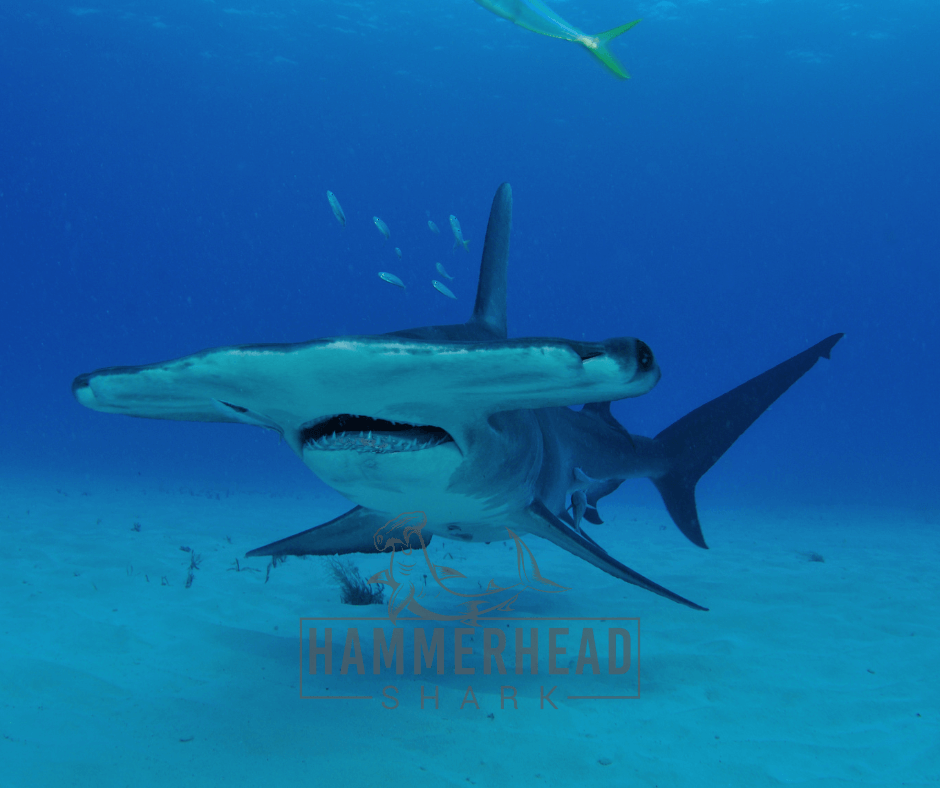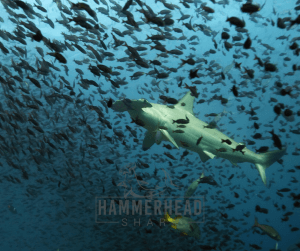The hammer-shaped head of the cephalofoil sharks has singularly held a fascination for many. While its appearance, in the shape of a hammer, big or small, depending on the species, may draw oohs and aahs, what is fascinating is its many functions.
The peculiar-shaped hammerhead may serve many purposes for a hammerhead shark. It serves many purposes, from apparent maneuverability to detecting prey’s electrical impulses.

How do hammerhead sharks communicate?
According to researchers, hammerheads are known to communicate through electrical signals. While there are nine different ways in which hammerhead sharks communicate, information is rather scanty.
One of the published pieces of information is that hammerheads shake their head from side to side, making for a spectacular scene. Sizeable female hammerhead sharks perform this, probably to get the interest of the pups and younger sharks while being in the center of large schools.
Regarding the eight-other ways of communication, none to very little information is available.
Why do hammerhead sharks live in schools?
Sharks are known to be solitary animals, traversing long distances by themselves. However, among hammerheads, two species are known to travel in schools. Including the quite big Scalloped Hammerheads that can measure 10-12 feet in length and weigh up to 300+ pounds.
While it is understandable that younger sharks may seek mutual protection, why do full-grown Scalloped Hammerheads form schools beat plausible explanations? One likely reason is that the schooling behavior may have been connected to their migration patterns or mating habits.
Interestingly, some schools are wholly made up of females, while other schools may contain both male and female sharks of different ages.
Enigmatically, in the adults-only groups, the hammerheads are known to disband as the night falls and congregate back together during the day.
The Scalloped Hammerheads have inter-species colleagues in schooling – the Smooth Hammerheads (Sphyrna zygaena) are also known to travel in schools.
Here are some Incredible Hammerhead Shark Facts:
Makes it a deadly hunter
The expanded and flattened head goes deep into physics! The hydrodynamics branch of science! Hydrodynamics is a branch of science involved with forces acting on or exerted by fluids/ liquids.
The hammerhead acts as a hydrodynamic bow plane allowing the shark more excellent maneuverability and making it a sharp hunter. It must raise and turn its head quickly and sharply to snap its prey.
These sharks are known to be effective hunters among all sharks. Now, we know its matchless head makes the hammerheads matchless!
Nose for it!
As with the shape, so is the nostril! The nostril is much drawn out compared to other sharks. This provides the hammerhead sharks with an acute knack for following the scent of their prey.
Once it zeroes on its prey, the prey has little chance to escape.
Eye for it!
Their eyes are set wide apart by design, thanks to their unique head shape. The hammerhead eyes provide the most remarkable overlap in their areas of view – which gives it a 360-degree idea. This gives them a better field of vision than other sharks.
A hammerhead can rotate its eyes and sweep its head from side to side, enhancing its stereoscopic vision even further.
With electroreceptors, sensory organs found in sharks and some fish, hammerhead sharks can easily detect their prey. These organs are like a sixth sense.
The spacing of the eyes gives a wider field of view and broadens the lateral field of view. These, thus, increase anterior depth perception, making their wide-set eyes an asset.
The fourth sense!
Hammerhead means a wide underside of the head. With its expanded surface area, it holds more electro-receptive organs – vital for sensing the electrical impulses of prey.
A prey, buried deep in sediment, is not hidden from the hammerhead! The electrical impulses are detected and snapped, further aided by the wide-set eyes.
Hammering the prey!
Large hammerheads use their heads, like large hammers, to hunt, ram, thump and thrash their prey, even stingrays and bottom-dwelling fish. They are known to use the wide margins of their heads to ram and pin the target to sediment before biting them.
This is all about the hammer in the hammerhead sharks. But, this is not all. As more and more research continues, we will get further information on these fascinating creatures.



